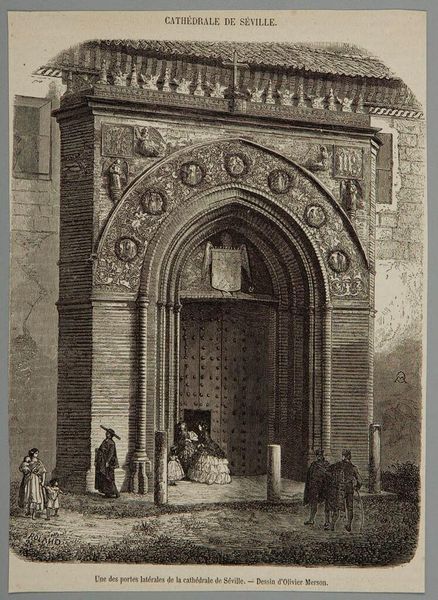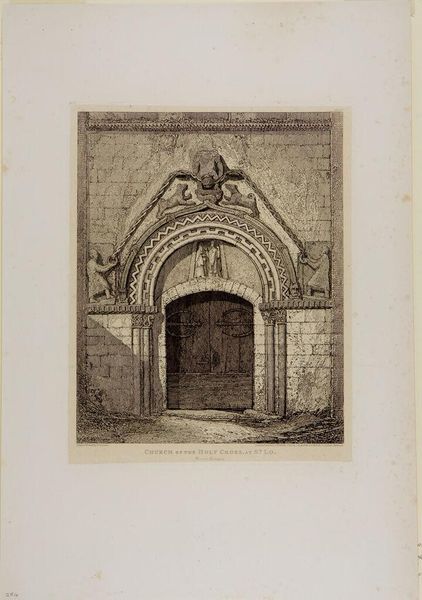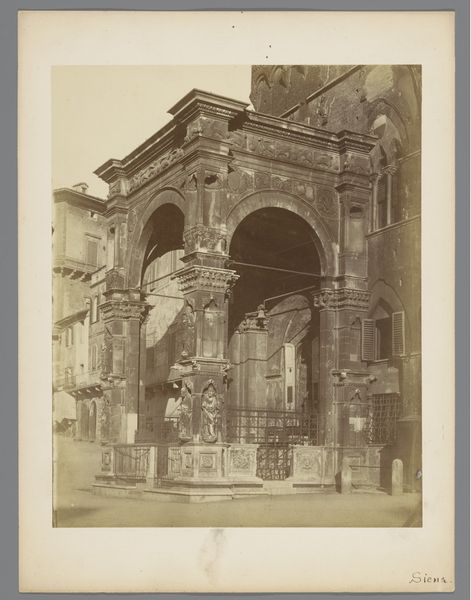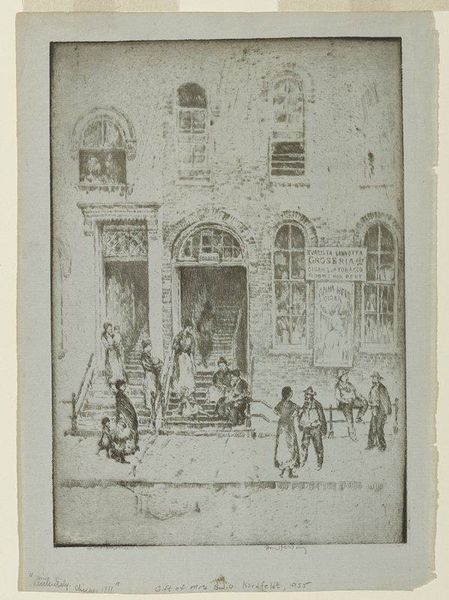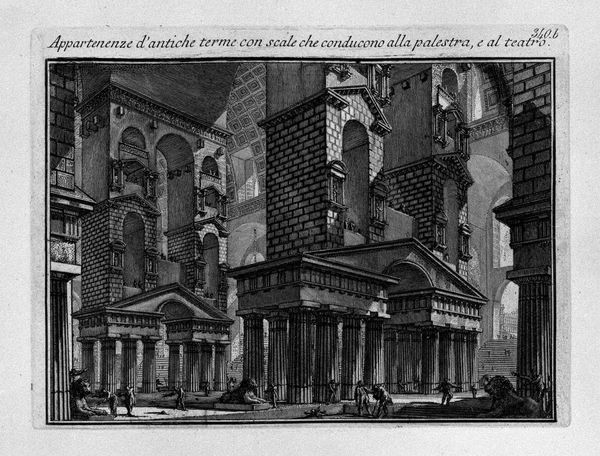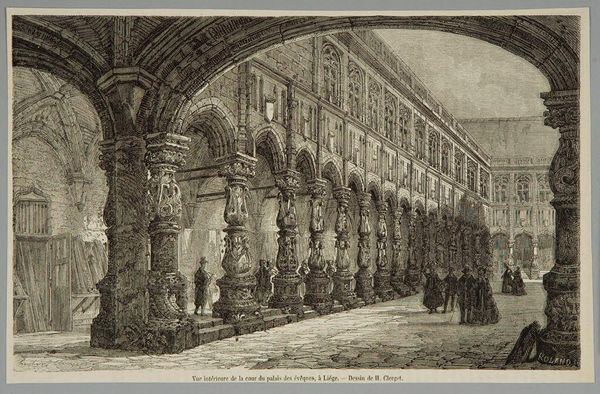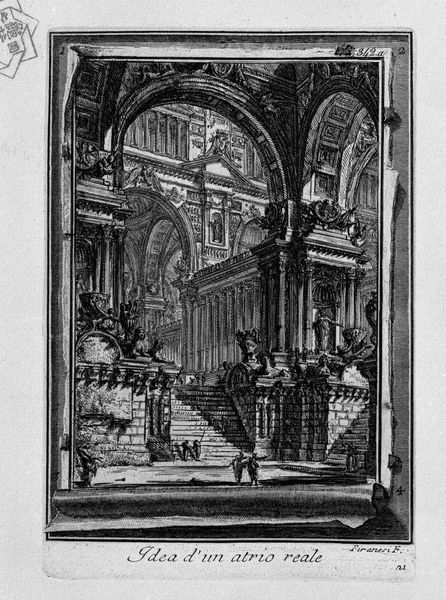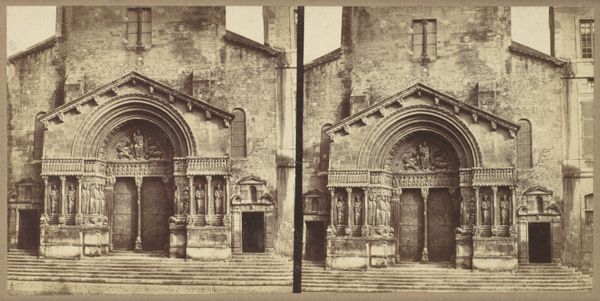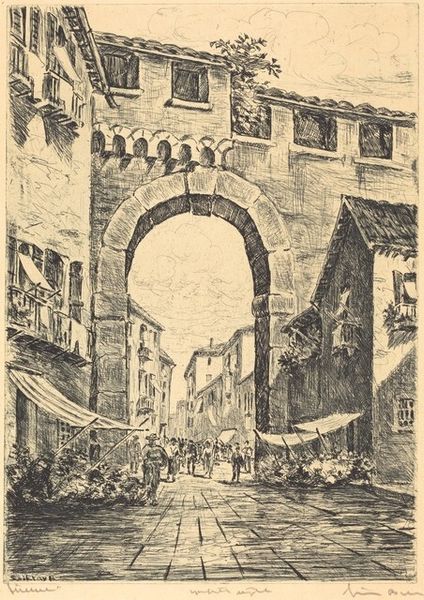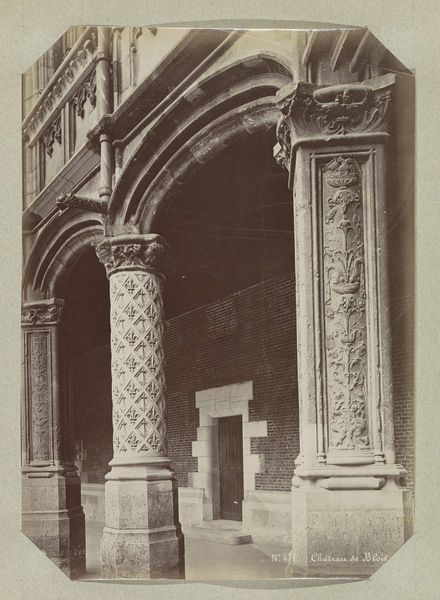
Copyright: CC0 1.0
Editor: This is a print of the Exterior Chapel of the Public Palace of Siena. It seems to be after a drawing by Lancelot, with the print signed by Dupré. I am struck by the way the chapel seems open and accessible, yet also separate. What do you see in this piece? Curator: I see the chapel as a crucial site of intersectionality, reflecting the complex relationship between the secular and the sacred in civic life. The placement outside the Public Palace suggests a negotiation of power. How did religious practices shape public policy and social identity in Siena at this time? Editor: So, the location isn’t just about convenience, but really about power dynamics? Curator: Exactly. Consider the role of public rituals and religious institutions in reinforcing social hierarchies, but also in providing spaces for dissent and community building. The chapel becomes a stage for these interactions. Editor: That's a really insightful way to look at it. It makes me think about how public spaces are always contested, and how art participates in that. Curator: Precisely, and recognizing that is the first step towards a more socially conscious art historical understanding.
Comments
No comments
Be the first to comment and join the conversation on the ultimate creative platform.
